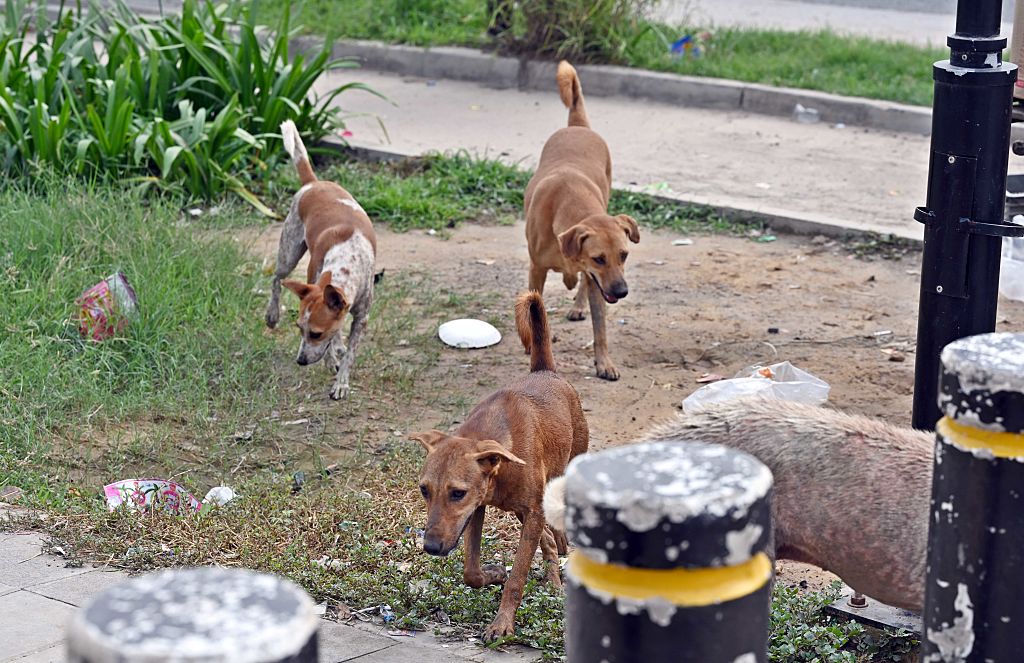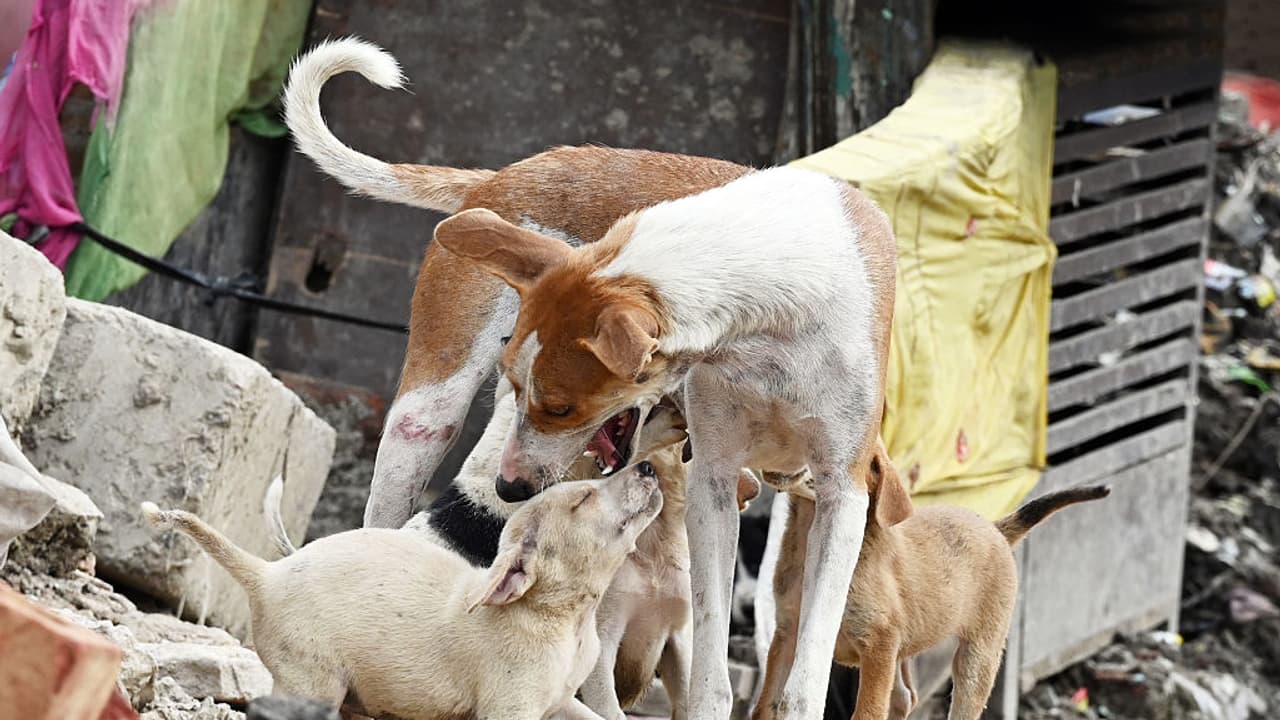SC’s order to relocate all stray dogs living in Delhi-NCR to shelters has sparked a massive debate. While animal lovers have slammed the ruling as “inhumane”, others have welcomed it, citing incidents of stray dogs attacking children and the elderly.
The Supreme Court on Monday ordered the removal of all stray dogs from all localities in Delhi-NCR within eight weeks and house them in dedicated dog shelters to be set up by civic authorities. A bench of Justices JB Pardiwala and R Mahadevan said that all localities should be made free of stray dogs and there should not be any compromise. It also made it clear that no captured animal will be released back on the streets. It also ordered contempt proceedings against any individual or organisation that attempts to obstruct the authorities from carrying out the capture drive. “If any individual or organisation comes in the way of picking stray dogs or rounding them up, we will proceed to take action against any such resistance,” said Justice Pardiwala.
The ruling has sparked a massive debate. While animal lovers have slammed the ruling as “inhumane”, others have welcomed it, citing incidents of stray dogs attacking children and the elderly. But amid the raging debate, a key question looms large: Can the Supreme Court order be really implemented on ground and what are the challenges?
Moving lakhs of stray dogs from Delhi’s streets into shelters (that don’t yet exist) is a task that demands huge funds, extensive manpower, and years of meticulous planning. Beyond logistical hurdles, the task pits civic bodies against deep-rooted territorial instincts of dogs, fierce opposition from local communities, when even basic municipal functions like unclogging drains and maintaining cleanliness already stretch resources thin.
10 Lakh Stray Dogs, Zero shelter: What Stats Show
Delhi’s last dog census in 2009 recorded about 5.6 lakh strays roaming the streets. Sixteen years on, without any updated survey, estimates now place the figure at a staggering 10 lakh. Housing such a vast number would require at least 2,000 shelters — assuming each accommodates 500 dogs. In sharp contrast, the Municipal Corporation of Delhi (MCD) currently operates a mere 20 animal control centres, designed only for short-term care post-sterilisation before release.
Even if converted into full-fledged shelters, they could hold fewer than 5,000 dogs — barely scratching 5% of the requirement.

The top court has ordered civic bodies across Delhi-NCR to ensure streets are “absolutely free of stray dogs” and to report progress within just eight weeks. But the core question remains: where will these dogs go? Building adequate shelters demands not only substantial funds and suitable land far from residential areas but also considerable time. Satya Sharma, chairperson of MCD’s standing committee, acknowledged the court’s directive, affirming their commitment to comply but conceding that land allocation and shelter construction would be time-consuming.
Easier Said Than Done
Executing the order will be anything but straightforward. MCD’s limited resources — only 2-3 dog-catching vans per zone and a shortage of trained handlers — make rounding up every stray a formidable challenge. Anticipated resistance from animal lovers could further escalate tensions in neighbourhoods.
Then comes the cost of daily feeding lakhs of dogs — potentially running into hundreds of crores annually. Essential infrastructure such as animal ambulances, veterinary doctors, CCTV surveillance, and shelter staff salaries would drive expenses even higher. MCD officials have stated that meetings are underway to deliberate on shelter construction and funding sources.
The Rabies and Bite Concerns
Official data shows Delhi has already reported 26,000 dog bite cases this year, alongside 49 rabies cases until July 31. Between January and June, more than 65,000 strays were sterilised and vaccinated. Justifying the court’s stance, a bench of Justice JD Pardiwala and Justice R Mahadevan remarked, “We are not doing this for us, it is for the public interest. So, no sentiments of any nature should be involved. Action should be taken at the earliest. All these animal activists, will they be able to bring back those who have fallen prey to rabies? We need to make streets absolutely free of stray dogs.”
The Counterpoint from Animal Rights Groups
Animal welfare organisations have denounced the ruling as both inhumane and unfeasible. PETA India criticised the plan, asserting that the “displacement and jailing of dogs is not scientific and has never worked”, warning it would “cause uproar” without addressing the core problems.
They argue that large-scale displacement can trigger territorial fights, starvation, and eventual return of the dogs to their original areas, especially if puppies continue to be born. The group stressed that the surge in stray numbers reflects a failed sterilisation strategy and urged authorities to abandon “ineffective and inhumane displacement drives” in favour of a robust, large-scale sterilisation programme as the only sustainable solution.
How Can India Humanely Solve its Growing Stray Dog Problem?
Indians have been far less kind to dogs on the street. Historically, there have been efforts to eliminate the stray dog problem by means including electrocution, poisoning, shooting, or just clubbing them to death.
Mass sterilisation and anti-rabies vaccination model in partnership with NGOs, without relocating or confining the animals are the only key. Instead of protecting humans from rabies, removing vaccinated dogs will remove the shield that is keeping us safe. Once that shield is gone, the virus will spread faster that we can stop it. Because herd immunity isn’t just for humans.
Remember how vaccinated people slowed Covid? Vaccinated street dogs do the same for rabies, like invisible guards standing between us and a deadly virus. When we remove them, we are creating an open field for the rabies to spread rampant.
Also, there is no national law in India that requires dog owners to register their pets. A few cities have such rules, but enforcement remains shoddy. It is not mandatory to get pets sterilised or vaccinated either.
Now, since owners are not accountable for their dogs or their dogs’ pups, hundreds of unwanted pet dogs and pups are abandoned on the street daily. The solution, experts say, is to have ABC drives target pedigreed pets with high breeding frequency. The government could offer incentives to owners to get their pets registered and sterilised. A steep tax may be levied on breeding pets.
Can learn from Netherlands
The Netherlands has eliminated its stray dog problem through a government-funded sterilisation programme covering over 70% of female dogs, strict animal welfare laws imposing up to three years’ jail and $16,000–$18,500 fines for abuse or abandonment, a high tax discouraging puppy purchases, and a nationwide adoption drive. Over 90% of Dutch households now adopt dogs.
